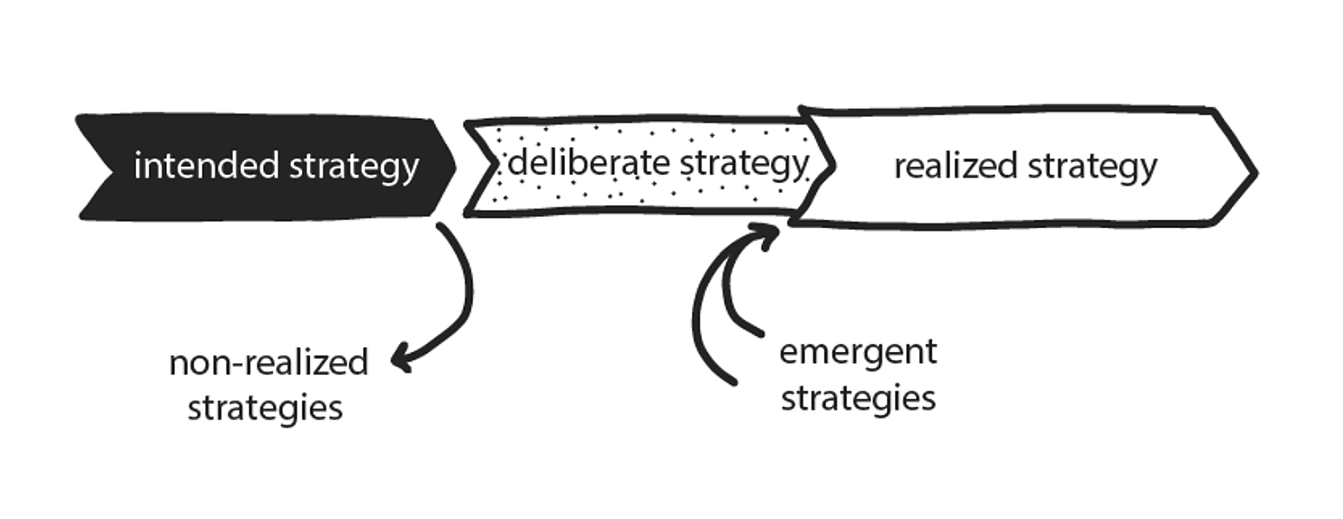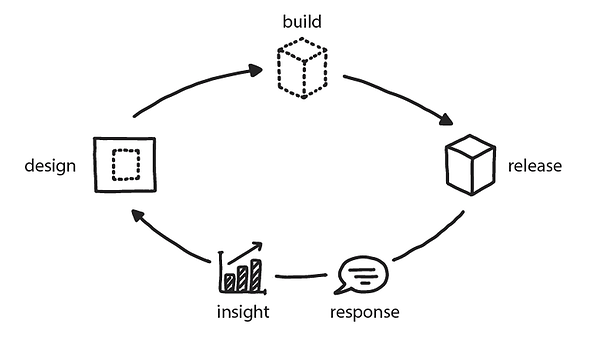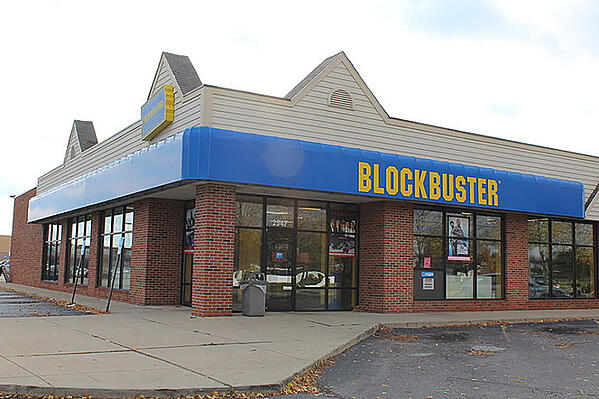In mediaeval times, there was a mythical land of Cockaigne in popular culture that served as a fantasy for the hungry masses. In this land, physical comforts were always available, and the harshness of life was banished. Plentiful food and drink was a pleasant thing for a starving peasant to contemplate as she stared at her thin broth in a cold hut in darkest winter.
 We no longer collectively dream of Cockaigne. (Most of us in the developed world find it all too easy to get fat.) But most enterprises in the 21st century might well fantasise about not having to worry about where revenue and profit are coming from.
We no longer collectively dream of Cockaigne. (Most of us in the developed world find it all too easy to get fat.) But most enterprises in the 21st century might well fantasise about not having to worry about where revenue and profit are coming from.
A mountain of cash
Some enterprises are indeed in this position, and can make money without much effort. Perhaps the most well-known money-making machine of this type is Google. The company's advertising revenue from search products means that it could simply do nothing and continue to make significant profits for a long time.
Why is this a curse? Because nothing lasts forever, and while Google may be king of search now, there’s nothing to stop it from being banished in the coming years to the recycle bin of history along with AltaVista and Yahoo.
A manager we spoke to about his experiences as a middle manager at Google said: 'It’s hard to argue for change in a company with 100 billion dollars in the bank'.
If a business is a proven success, then getting it to change in any respect is going to be extremely difficult. The evidence of success is sitting in the bank, and this does not promote the reflection required to motivate real change.
The sheer march of time is itself a threat to your business, and demands change and adaptation to meet it.
‘Curse of Plenty’ anti-patterns
So what to do about this? On the one hand, you are aware of a threat, and on the other, you don’t want to hurt your cash cow. In other words, you lack a real existential threat to motivate real change.
At Container Solutions, we see this pattern frequently: A senior executive team demands technological change in the face of some distant but very real threat. This might be disruptive challengers in your industry that pose a small but growing threat to your business, or that your traditional customers are dying off and not being replaced by a younger generation.
Unfortunately, what to do about this threat is not clear.
Anti-patterns we see include:
Lack of resilience
Regardless of why a Cloud Native transformation—or any transformation—is initiated, when the going gets tough it can be tough to keep going. At that point, if you suffer from the Curse of Plenty, it can be easy just to give up and abandon all attempts to change. However, if the world is still moving on, your reasons for initiating change in the first place have not gone away, and you are further away from dealing with the threat.
Case Study 1: Abandoned Cloud Platform
A large bank’s board decided that it needed to exit its data centres, so embarked on an ambitious strategy to do so, ostensibly to save money. After three years, a completely original universal platform was built that satisfied the regulators. However, to get there many compromises were made, and the board decided that it was too difficult and expensive to achieve the original goal, and effectively disbanded the team.
When an ambitious goal is set, it is easy to give up on the whole effort when it turns out to be more difficult than originally anticipated. In this case, a team with unique and deep experience in solving a problem that will become common in banking and finance in the coming years was expensively built and then discarded, effectively wasting any value generated from the investment.
The ‘cargo cult’ transformation
Organisations can feel that they must initiate a Cloud Native transformation because they believe others in the same space are doing so also, or already have. This is a kind of FOMO (fear of missing out) that can result in half-hearted attempts at transformation that wither in the face of the inevitable challenges (see ‘Lack of resilience’).
In such cases, an organisation might simply copy what others have done, without first figuring out what would and wouldn’t work in their context. The hard work of effecting change within a specific context results in a collective learned experience that cannot be replicated by just copying the perceived behaviours that result.
This is often called ‘cargo cult transformation’, after the description of ‘cargo cult science’ popularised by the physicist Richard Feynman. The original ‘cargo cults’ were behaviours designed to reproduce desirable outcomes from past events. For example, Melanesian islanders built fake airstrips in an attempt to get the Japanese and American aeroplanes that had previously dropped off valuable supplies in World War II to come back. By building the fake airstrips, they thought they would get the same outcome as before.
In recent years, many IT transformations have cargo-culted the Spotify model, with its Guilds, Tribes, and Squad structure. Whilst the Spotify model may work for many organisations, it is unlikely that simply naming a group of employees a ‘Tribe’ is going to fundamentally change anything about the way those people work.
Lack of existential ‘event’
If you haven’t experienced an existential threat, then it can be hard to summon the energy to make the changes you need, especially if the business is currently a financial success.
Case Study 2: Blockbuster Video
In 2000, the then-dominant 15-year-old video chain Blockbuster was offered Netflix in a $50m sale. The CEO of Blockbuster tried not to laugh at the unreasonably high price, and the negotiation ended there. At the time, Blockbuster had about 7,000 stores worldwide and was still growing. Ten years later, Blockbuster filed for bankruptcy, and the last store closed in 2014, while Netflix has a market capitalisation value of $160 billion.
This is an example of a successful and growing business failing to take seriously enough a need to change. From 2000, Blockbuster had another six years of growth. Four years later, the game was up. Lack of management cohesion
Without a clear business need to change, retaining the level of unity among senior management required to sustain the focus required to support the rest of the business can prove difficult. The transformation agents end up spending so much time playing politics that they get burnt out, frustrated, and give up, or get disillusioned and leave.
Outsourcing responsibility
One tempting approach is to hand over responsibility for making the change to a third party, who you can then blame if things go wrong. The old saying ‘You never get fired for hiring IBM’ could equally be applied to the big names traditionally involved in change management.
Engaging a third party can work if senior leadership retain ownership of the result, and collaborate with the service providers to work through the challenges that transformation brings. But if your company’s executives don’t take ownership of the project, then the entire effort can be wasted.
Innovator’s Dilemma
Readers of Innovator’s Dilemma may recognise these concerns. In that classic business text, Clayton Christensen describes the challenges facing enterprises that dominate an existing market from present and future threats through technology. He looks closely at two apparently very different industries (disk drives and mechanical diggers), and draws common lessons for other technology firms.
Interestingly, the prescription of the book is not simply to transform quickly, or always invest in whatever is new or innovative. If done too early, or in the wrong manner, misdirected investment can result in even more wasted opportunity. Examples of these abound, from Polaroid pioneering the digital camera in 1975 to Xerox Parc’s innovation spree earlier that decade. Both organisations failed to see the path to profitability of their own innovations, causing that innovation effort to effectively be for nought.
Breaking the ‘Curse of Plenty’
When you suffer from the ‘Curse of Plenty’, you can fall victim to your own success. A mountain of cash, market dominance, or a golden money-making product at the centre of your business can all encourage you to ignore longer-term threats that may require transformative effort to address. To recap, this can take several forms, including:
- A ‘cargo-cult’ transformation by numbers
- Outsourcing the responsibility for the change
- Giving up on change when the going gets tough
- Half-hearted attempts at innovation that are not supported and pursued
So how do you break out of it?
There are three broad ways to fight the Curse of Plenty:
- Set expectations appropriately
- Minimise the cost of failure
- Maximise the learning opportunities
Let’s look at these areas in turn, and which Cloud Native patterns can be applied to manage them.
Setting expectations
If you are a successful company generating profit, then you may well have a certain set of expectations about what any new project should bring. For example, you may be a profit-focussed company that looks at every project on a cost/benefit horizon of a year, or even a quarter. Or you may be a time and materials service company that is used to generating revenue very quickly from the start of a project.
It’s important to understand at a high level when dealing with the Curse of Plenty that your new initiatives might need to be valued differently. For example, you might be a financial services company that aims to attract lower-value younger customers rather than higher-value older customers. Your transformation strategy therefore might need to be judged on how many new and younger customers you can gain, rather than how much revenue these new customers bring in.
Case Study 3: New Products Now!
A young engineer joined a fast-growing professional services company. He was promoted very quickly, and then put in charge of a ‘new products’ team with a wide remit. After three months, he got a very negative review, citing the fact that a long-standing customer team had turned a greater profit than his new products team. At the time, the first product identified was still being built, and was ahead of schedule, but as-yet unsold.
This ‘new products’ pattern is very common in bespoke services companies that are used to ‘farming’ a steady stream of profit from their established customers. While the lure of high profitability from product sales is a strong motivator for senior management initiating such projects, adjusting their expectations for the longer road to profitability can prove problematic.
Here the Objective Setting pattern can help clarify the goals of your transformation in a conscious way. Combined with the Dynamic Strategy pattern, you can communicate to your business that one of the goals of the transformation is to determine the best way to head off distant threats without threatening the company’s current cash cow.
Objective Setting

Dynamic Strategy

That means that ‘success’ for any change project will probably need to be defined on different terms than the existing, successful projects. The challenge doesn’t stop with grasping that point, but continues as you have to communicate that change in success criteria across the business as part of the Internal Evangelism pattern.
Internal Evangelism

Minimising the cost of failure
Any profitable enterprise typically has an aversion to losing money. There are, of course, plenty of positive things to say about this aversion, so when taking on potentially risky transformation efforts it is good to attempt to minimise the cost of failure.
The simplest way to reduce the cost of failure is to adopt a Gradually Raising the Stakes approach. Starting with low-cost Exploratory Experiments and No Regret Moves.
Gradually Raising the Stakes

Exploratory Experiments

No Regret Moves

As learning and confidence increases, you can move onto Options and Hedges via Proofs of Concept, which can in turn lead to a more focussed approach to execution in the Big Bet phase.
Options and Hedges

Proof of Concept

Big Bet

In order to facilitate these experiments, you may need to consciously work to Reduce the Cost of Experimentation: if your project delivery cycle requires extensive up-front planning even for small initiatives, then these overheads can potentially stifle productive learning processes even before they start.
Reduce the Cost of Experimentation

Maximise Learning
Having kept the cost of failure down, it’s worth looking at maximising the upside of failure. Since no one has all the answers and every business situation is unique, every time your organisation fails to deliver something, there is an opportunity to learn.
Case Study 4: Getting Support Right
Back in 2000, a services company with a market-dominating product tried to build a support function. It sold lots of contracts, then went looking for support engineers and managers based on standard definitions of what these roles were in the market. Having hired a small team, it quickly learned that the customers didn’t want a standardised support team. Instead, they preferred an approach where experienced developers supported the software, an approach that later came to be known in the industry as ‘DevOps’, and more recently ‘Site Reliability Engineering’.
Rather than try and persist with a broken standard model, the team was dissolved and a new team built from experienced engineers who were more empowered to resolve issues. The customers were happy, and time spent in the team was seen as critical to the career development of technical staff.
By quickly identifying a ‘standard’ solution that wasn’t working, and taking steps to change course quickly by asking the stakeholders what they wanted, an innovative and commercially successful approach was taken without much damage being caused. In fact, the company was praised by its customers for its swift and responsive action, and even asked for consulting on how to set up their own teams in a similar way.
Creating an organisational Learning Loop within the business can create a capability that is in itself a pipeline of value. Knowing how and why a particular approach doesn’t work for your business reduces costs in the longer term, as you are less likely to make the same mistake twice.
Learning Loop

Ultimately, you want to become a Learning Organisation that can adapt to change without threatening the existing, profitable business that you want to protect. These learnings can then be used in multiple ways, for example, to:
Avoid costly repetition of strategic missteps
- Make more sophisticated decisions when buying third-party products, hiring external staff, or partnering with other businesses
- Build innovative new products
- Reduce running costs
Learning Organisation

An organisation that invests in learning how to learn will reap dividends for years to come. This is especially true in the field of Cloud Native software engineering and operations.
Conclusion
In our experience at Container Solutions, the Curse of Plenty is not universal, but is far from rare. The businesses that have sustained themselves over time lack an immediate incentive to change, so it is not hard to find examples that are so successful that they are tempted to rest on their laurels.
By respecting the importance of their historical success as they focus on developing skills and expertise in areas that threaten their core business, these companies can have the best of both worlds: a stable but potentially time-limited core business, and the capability to invest in new options for growth without risking their current prosperity.
We explore some of these ideas in more detail in our O’Reilly book which is currently available to download for free. The book’s centrepiece is a library of more than 70 patterns, solutions that have worked for our clients. The patterns tackle the essential elements of Cloud Native: architecture, strategy, process, technology, and culture.



 Previous article
Previous article
